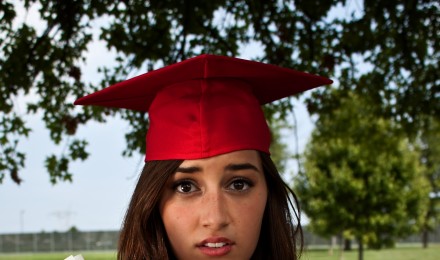A borrower cannot expect to have a student loan discharge simply by filing for personal bankruptcy. Federal and private student loan debts are considered priority debts. Under current bankruptcy law, these types of debts are deemed too important to discharge through normal bankruptcy proceedings. After filing a Chapter 7 or Chapter 13 action, a borrower must file a separate lawsuit within the bankruptcy case called an adversary proceeding to discharge student loans.
An adversary proceeding is a type of civil lawsuit in which a plaintiff, the borrower, files a complaint against one or more defendants. Here, a lender is one of the defendants. In the adversary proceeding, the borrower is required to file a petition for determination of undue hardship. If the court grants this petition, it will order the student loan discharge.
Nine of the 13 federal circuits use the Brunner test to determine whether a borrower faces undue hardship. The Brunner test requires the borrower to satisfy a three-prong test. The borrower must show the borrower cannot maintain, based on current income and expenses, a minimal standard of living for themself and their dependents if forced to repay the loan; additional circumstances exist indicating that the borrower’s state of affairs is likely to persist for a significant payment of the repayment period of the student loan; and the borrower has made good faith efforts to repay the loan. To satisfy the second and third prongs, the court typically requires a borrower to show that they are making efforts to increase their income, consolidate their loans, and cut unnecessary expenses.
The Eighth Circuit Court of Appeals, which covers Arkansas, Iowa, Minnesota, Missouri, Nebraska, North Dakota, and South Dakota, does not use the Brunner test. The Bankruptcy Appellate Panel of this court has awarded student loan discharge without making a determination on a borrower’s financial circumstances. In two of the more well-known 8th Circuit cases, In re Reynolds (Reynolds v. Pa. Higher Educ. Assistance Agency) and In re Walker (Walker v. Educational Credit Management Corporation), the Bankruptcy Appellate Panel of the Court determined that a borrower faced undue hardship because of mental health issues (Reynolds) and an obligation to care for multiple young children, some with developmental disorders (Walker).
The Eleventh Circuit Court of Appeals, which covers Alabama, Florida, and Georgia; and the First Circuit Court of Appeals, which covers Maine, Massachusetts, New Hampshire, Puerto Rico, and Rhode Island, use a “totality of circumstances” test. The First Circuit Court of Appeals has summarized this test as, “Can the borrower now, and in the foreseeable future, maintain a reasonable, minimal standard of living for the borrower and the borrower’s dependents and still afford to make payments on the borrower’s student loans?” This test is essentially the Brunner test minus the third prong.
A borrower is not obligated to repay a student loan while their bankruptcy case is in court. While the case is ongoing, however, the loan will accrue interest. After the case has been resolved, the borrower is required to begin making payments again if there is no student loan discharge
A borrower cannot expect to have a student loan discharge simply by filing for personal bankruptcy. Federal and private student loan debts are considered priority debts. Under current bankruptcy law, these types of debts are deemed too important to discharge through normal bankruptcy proceedings. After filing a Chapter 7 or Chapter 13 action, a borrower must file a separate lawsuit within the bankruptcy case called an adversary proceeding to discharge student loans.
An adversary proceeding is a type of civil lawsuit in which a plaintiff, the borrower, files a complaint against one or more defendants. Here, a lender is one of the defendants. In the adversary proceeding, the borrower is required to file a petition for determination of undue hardship. If the court grants this petition, it will order the student loan discharge.
Nine of the 13 federal circuits use the Brunner test to determine whether a borrower faces undue hardship. The Brunner test requires the borrower to satisfy a three-prong test. The borrower must show the borrower cannot maintain, based on current income and expenses, a minimal standard of living for themself and their dependents if forced to repay the loan; additional circumstances exist indicating that the borrower’s state of affairs is likely to persist for a significant payment of the repayment period of the student loan; and the borrower has made good faith efforts to repay the loan. To satisfy the second and third prongs, the court typically requires a borrower to show that they are making efforts to increase their income, consolidate their loans, and cut unnecessary expenses.
The Eighth Circuit Court of Appeals, which covers Arkansas, Iowa, Minnesota, Missouri, Nebraska, North Dakota, and South Dakota, does not use the Brunner test. The Bankruptcy Appellate Panel of this court has awarded student loan discharge without making a determination on a borrower’s financial circumstances. In two of the more well-known 8th Circuit cases, In re Reynolds (Reynolds v. Pa. Higher Educ. Assistance Agency) and In re Walker (Walker v. Educational Credit Management Corporation), the Bankruptcy Appellate Panel of the Court determined that a borrower faced undue hardship because of mental health issues (Reynolds) and an obligation to care for multiple young children, some with developmental disorders (Walker).
The Eleventh Circuit Court of Appeals, which covers Alabama, Florida, and Georgia; and the First Circuit Court of Appeals, which covers Maine, Massachusetts, New Hampshire, Puerto Rico, and Rhode Island, use a “totality of circumstances” test. The First Circuit Court of Appeals has summarized this test as, “Can the borrower now, and in the foreseeable future, maintain a reasonable, minimal standard of living for the borrower and the borrower’s dependents and still afford to make payments on the borrower’s student loans?” This test is essentially the Brunner test minus the third prong.
A borrower is not obligated to repay a student loan while their bankruptcy case is in court. While the case is ongoing, however, the loan will accrue interest. After the case has been resolved, the borrower is required to begin making payments again if there is no student loan discharge






